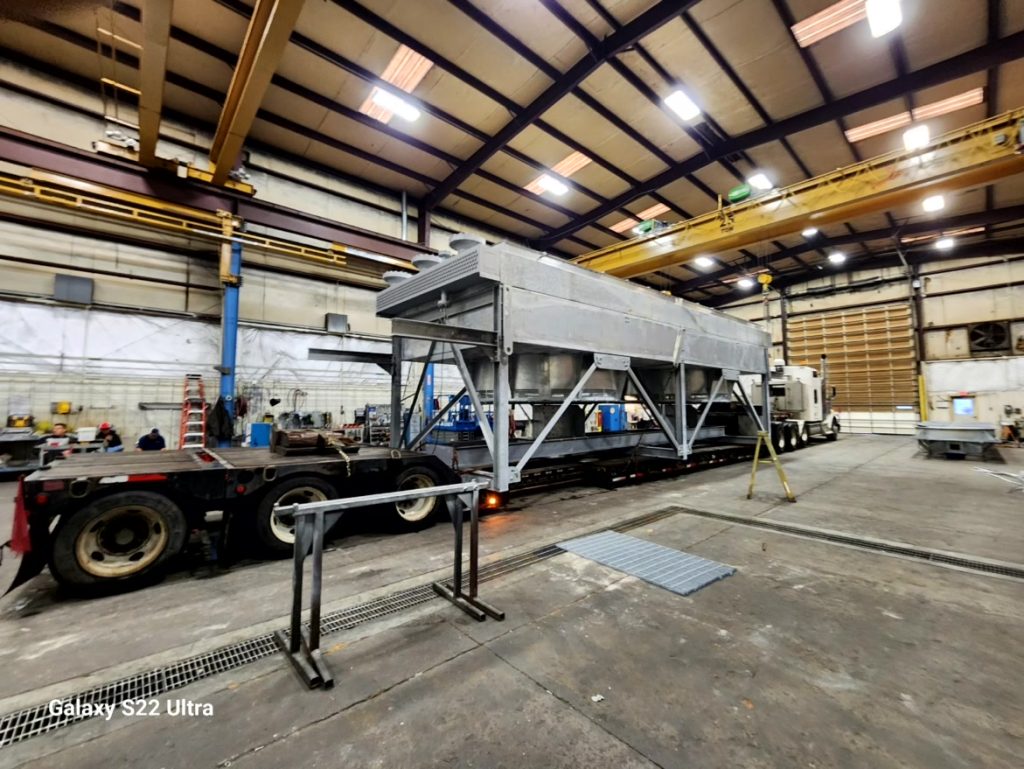What is Spot Freight In Heavy Haul?
Freedom Heavy Haul can offer expedited Pickup and Delivery for any size shipment anywhere in the USA. Contact us today for No Hassle, No Pressure Pricing.
The logistics industry is a complex and dynamic field, continually evolving with the demands of global trade. At the heart of this industry lies the concept of spot freight, a critical component that plays a vital role in the movement of goods across the globe.
This article explains what is spot freight, offering a comprehensive understanding of its mechanisms, its impact on the logistics industry, and its future trajectory.
What is Spot Freight
Spot freight, often considered the lifeblood of the logistics industry, refers to the transportation of goods that are booked on a one-time basis, typically to meet immediate shipping needs. Unlike long-term contracts, spot freight is characterized by its flexibility and responsiveness to market conditions.
Defining Spot Freight in the Logistics Industry
Spot freight is defined by its immediacy and adaptability. It involves securing transportation for cargo on short notice, usually through a bidding process or direct negotiation with carriers. This method is particularly advantageous for businesses dealing with unpredictable demand or needing expedited shipping.
The Evolution and Importance of Spot Freight
The evolution of spot freight reflects broader economic and technological shifts. Increasing global trade, e-commerce growth, and supply chain complexities have elevated the importance of spot freight in ensuring timely, cost-effective delivery of goods.
Spot Freight vs. Traditional Freight Models
Traditional freight models typically rely on long-term contracts, offering stability in pricing and capacity but less flexibility. In contrast, spot freight provides agility and the ability to capitalize on lower rates in a fluctuating market, though it may also come with higher risk and variability.
Spot Freight Market
The spot freight market is a dynamic and often volatile space, where prices and availability can change rapidly in response to a variety of factors.
Key Characteristics of the Spot Market
The spot market is marked by its immediate nature, with transactions often completed within a short timeframe. Prices are typically determined by the current balance of supply and demand, leading to fluctuations that can be beneficial or challenging for shippers and carriers alike.
Analysis of Supply and Demand Dynamics
Supply and demand in the spot freight market are influenced by numerous factors, including seasonal trends, economic conditions, and geopolitical events. An understanding of these dynamics is crucial for businesses to navigate the market effectively.
Role of Digital Platforms in the Spot Freight Market
Technology has transformed the spot freight market. Digital platforms and freight marketplaces have emerged, offering greater transparency, efficiency, and connectivity between shippers and carriers. These tools are becoming indispensable in the modern logistics landscape.
Factors Influencing Spot Freight Rates
Spot freight rates are not static; they are shaped by a variety of economic, seasonal, and geopolitical factors.

Economic Indicators Affecting Rates
Economic indicators such as GDP growth, consumer spending, and manufacturing output directly impact freight rates. A robust economy typically drives up demand for transportation, leading to higher spot rates, while an economic downturn can result in an oversupply of capacity and lower rates.
Seasonal Variations and Their Impact
Seasonal trends significantly affect the spot freight market. For instance, the retail peak season before holidays can lead to a surge in demand and rates, while quieter periods may see a reduction in both.
Geopolitical Factors and Global Trade Trends
Geopolitical events, trade policies, and international conflicts can all influence the spot freight market. Changes in tariffs, trade routes, and global economic policies can cause sudden shifts in demand and rates, making it a complex environment to navigate.
Operational Aspects of Spot Freight
The operation of spot freight involves a series of steps, from identifying transportation needs to the final delivery of goods.
Process Flow in Spot Buy Logistics
The process of securing spot freight involves several key steps: identifying the shipping need, sourcing carriers, negotiating rates, and arranging for the pickup and delivery of goods. Each step requires careful coordination and communication to ensure timely and cost-effective transport.
Challenges and Solutions in Spot Freight Operations
Spot freight operations face challenges such as capacity constraints, rate volatility, and complex coordination efforts. Solutions include leveraging technology for better market insights, building relationships with a network of reliable carriers, and adopting flexible logistics strategies.
Case Studies: Successful Spot Freight Operations
Examining real-life examples provides valuable insights into effective spot freight management. Case studies from various industries demonstrate how businesses overcome operational challenges and capitalize on the advantages of spot freight.
Strategic Approaches to Spot Freight
Incorporating spot freight into a company’s overall logistics strategy can yield significant benefits.

Benefits of Using Spot Freight for Businesses
Spot freight offers businesses the flexibility to respond quickly to market changes, the opportunity to take advantage of lower rates, and the ability to meet unexpected shipping demands. These benefits can lead to cost savings and enhanced supply chain resilience.
Integrating Spot Freight into Supply Chain Strategies
Integrating spot freight into a broader supply chain strategy involves balancing the use of spot and contract freight. This balance allows businesses to manage risks, control costs, and maintain service levels effectively.
Role of Data Analytics in Spot Freight Decision Making
Data analytics plays a critical role in spot freight management, providing insights into market trends, carrier performance, and rate fluctuations. Leveraging data helps businesses make informed decisions, optimizing their freight strategies.
Comparative Analysis: Spot Freight vs Other Shipping Options
Spot freight is one of several shipping options available to businesses, each with its own set of advantages and challenges.
Pros and Cons of Spot Freight
While spot freight offers flexibility and potential cost savings, it also comes with risks like rate volatility and capacity uncertainty. Understanding these pros and cons is essential for businesses to make informed shipping decisions.
Long-Term Contracts vs. Spot Freight Agreements
Long-term contracts provide stability in pricing and capacity but lack the flexibility of spot freight. Businesses often use a mix of both to balance the benefits and mitigate the risks associated with each method.
Emerging Alternatives to Traditional Spot Freight Methods
Innovations in logistics are leading to new alternatives to traditional spot freight methods. These include digital freight matching platforms, collaborative shipping models, and advanced analytics tools that enhance the efficiency and effectiveness of freight management.
Trends, Regulations, and Future of Spot Freight
The spot freight industry is continuously evolving, influenced by trends, regulatory changes, and technological advancements.

Current Trends and Statistical Overview of the Market
Current trends in the spot freight market include increased digitization, a growing emphasis on sustainability, and shifts in trade patterns. These trends are shaping the future of spot freight, with significant implications for shippers and carriers.
Regulatory Framework and Compliance in Spot Freight
The regulatory landscape for spot freight is complex, encompassing international trade laws, transportation regulations, and environmental mandates. Compliance is critical for businesses to operate effectively in the global market.
Future Predictions and Innovations in Spot Freight
The future of spot freight is likely to be driven by technological innovation, including automation, blockchain, and AI-driven analytics. These advancements promise to bring greater efficiency, transparency, and sustainability to the spot freight industry.
What is Spot Freight in Specialized Contexts
Spot freight plays a unique role in specialized contexts, such as heavy hauling and international trade.
Spot Freight in Heavy Hauling and Specialized Transport
In heavy hauling and specialized transport, spot freight is often the go-to solution for moving oversized or unconventional loads. The complexity of these shipments requires specialized expertise and flexible logistics solutions.
Global Perspectives: Spot Freight in Different Regions
The use and characteristics of spot freight vary across different regions, influenced by local market conditions, infrastructure, and regulatory environments. This global perspective highlights the diversity of spot freight practices worldwide.







